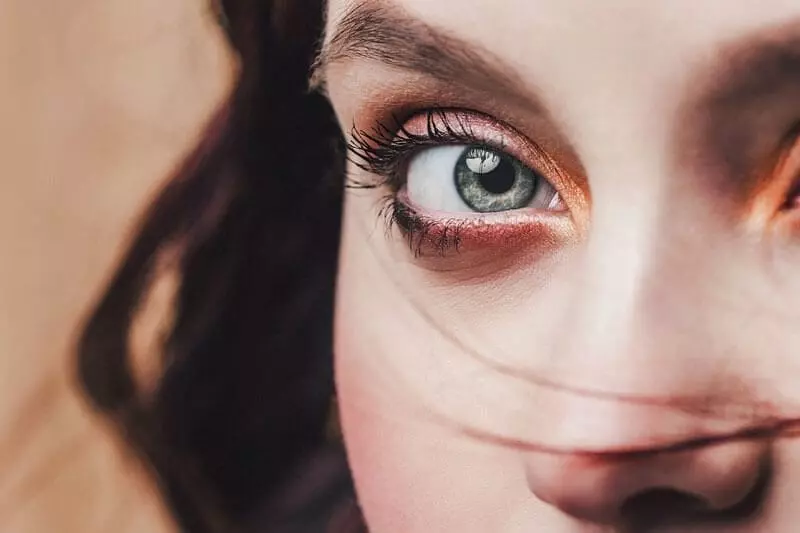Have you ever looked in the mirror and noticed that your eye color looks different? Did your eyes appear a darker brown yesterday but today they look lighter? Eye color in and of itself is a fascinating phenomenon. But when your eyes appear to change color suddenly, or even over time, the wonder that is eye color becomes significantly more intriguing.
Where does eye color come from, and how can it change? Does this change happen naturally or do outside factors influence how your eye color appears? Below, we’ll answer these questions and others as we explain why and how eye color changes.
How Does Eye Color Develop?
When you were born, you likely had blue eyes. Babies’ eyes display this color because their bodies and eyes contain low levels of melanin. Melanin is a pigment that gives your eyes, skin, and hair their color. Once your body became exposed to light, it started to produce melanin, which in turn changed the color of your hair, skin, and eyes.
Since babies don’t receive a lot of light exposure, they tend to have fairer skin, hair, and eyes than adults. However, genetics also factor into skin, eye, and hair color. For example, if your parents have darker skin and hair, then you likely had those same dark pigments in your skin and hair when you were born.
Your eye color, however, probably took a little more time to develop. The longer your eyes were exposed to light, the more melanin pigments your irises produced. But depending on your genetics, your eyes could have turned dark brown. Or maybe your eyes didn’t darken much and they stayed light blue. So regardless of how much or little light exposure you have, your genes determine how light or dark your eye color is.
When Can Eyes Change Color?
Typically, a person’s eye color becomes permanent about three years after birth. Once eye color has set, the color usually won’t change. However, several factors can influence your eye color and whether or not it changes to a different pigment.
Increased Sun Exposure
As previously mentioned, exposure to light causes your body to produce more melanin. Even if your eye color has set, your eye color could slightly change if you expose your eyes to more sunlight. As a result, your eyes might appear a darker shade of brown, blue, green, or gray, depending on your current eye color.
Sunlight can also reveal colors that were already in your eyes. Since natural sunlight is often brighter than artificial lights, exposure to it might allow you to see colors in your irises that you couldn’t recognize before.
Changes in Pupil Size
Your pupils’ size can also cause your eyes to change color. When your pupils shrink or dilate, the color of your eyes may seem to change. For example, if your pupils widen, not as much of your irises are exposed, and the remaining irises look darker.
On the other hand, when your pupils are smaller, your eye color may appear lighter. This change is due to the contrast between the black of the pupil and the surrounding iris.
Clothing You Wear
If you think back to your elementary, middle school, high school, or even college art classes, you’ll remember that complementary colors enhance one another. When reds and greens are placed together, the reds appear more vibrant while the greens appear more lush.
This principle applies to eye color as well. If you wear certain colors of clothing, the pigments in your shirt, jacket, tie, or scarf could temporarily change the color of your eyes. Depending on the color you wear, your eyes may appear lighter or darker.
Development of Heterochromia
If you’ve developed a rare condition called heterochromia, your eyes likely have changed color significantly. Heterochromia refers to a condition where each iris has a different color. However, a few kinds of this condition exist.
Partial heterochromia means parts of your irises are different colors. One corner might look green while the rest of the iris looks blue. Central heterochromia refers to a condition where your iris has two different colored rings.
You might be born with this condition, and if you are, it doesn’t affect your health. However, you can acquire heterochromia as an adult from:
- Eye surgery
- Eye bleeding
- Eye swelling
- Eye injury
- Developing of glaucoma
- Developing of tumors in the iris
Some of these causes can have adverse effects on your ocular and overall health. If you’ve noticed a drastic change in your eye color as an adult, you may need to see an ophthalmologist or optometrist to rule out any possible health risks.
What Do the Experts Say About Changing Eye Color?
According to some eye doctors, your eyes don’t just change color on their own. Instead, a variety of external factors combined with your genetics determines how your eye color looks on any given day. Unless you’ve noticed drastic, sudden changes in your eye color, you have no need to worry.
However, if your eye color has changed suddenly and you noticed a big difference in the color, meet with your eye doctor immediately. This rapid change could be a sign of a more serious issue that your eye doctor can diagnose and treat.

